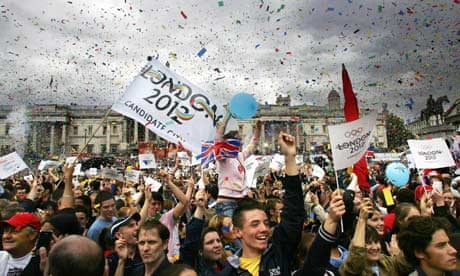The first data released from the 2011 census has made my job a little easier. No longer need I describe London's population in vague ways such as "probably about 7.8 million," or something similarly hedged that isn't a nice, round number. The Office for National Statistics has revealed in its table PO4 that the capital contained 8,173,900 inhabitants matching that description as measured on 27 March last year. In my language that's a tidy eight million for short.
The figure also represents a rise of 12% since the last census was conducted in 2001*, the largest of any region of England and Wales. The fastest-growing boroughs were Tower Hamlets (up 26% to 254,100), Newham (up 23% to 308,000) and Hackney (up 19% to 246,300), respectively the first, second and fourth fastest-growing in the whole of the two countries. Those three Olympic boroughs aren't the most highly highly-populated in terms of numbers, though. That honour belongs to Croydon with 363,400, followed by Barnet with 356,400 and Ealing with 338,400. Most Londoners still live in Outer London.
What does the capital's surge in population mean? Some historical context helps. We're still half a million short of where we were in 1939, and not until 2000 did the curve start going up again. Fast economic growth will be part of the story here along with a related renewal of confidence in London, indeed cities in general, as places to live. But don't jump to the conclusion that it's mostly about foreign migrants.
ONS figures for 2009 showed that 154,000 people arrived in the capital from overseas during that year, accounting for about 2% of the population. A larger number - 178,000 - moved to London from elsewhere in the UK.
Meanwhile, slightly more people in all - 339,000 compared with 332,000 - actually moved out of London in 2009 than moved in, with 216,000 leaving for other parts of the UK and 123,000 for other countries. The big contributor to London's recent population growth is not inward migration but a birth rate among its existing population that outstrips its death rate. Further census findings will probably shed more light.
*Footnote Statistical caveat: Guardian data master Simon Rogers tells me that because of what are described as "known issues with the 2001 census" the new census data is not being compared with that from the 2001 census but ONS estimates for that year. See Simon's dazzling England and Wales census data map here.

Comments (…)
Sign in or create your Guardian account to join the discussion